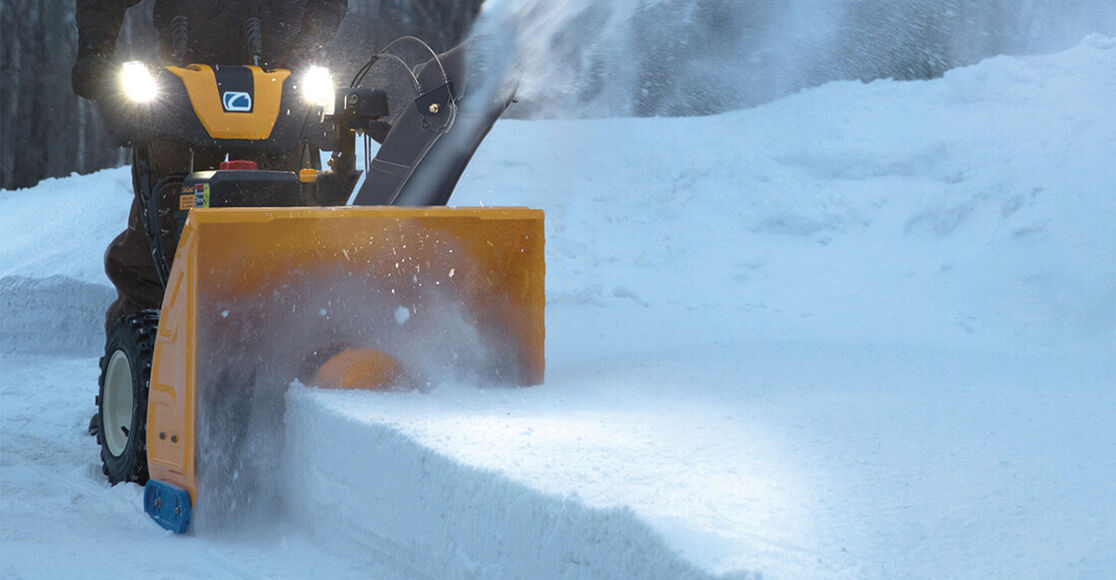Learn how to safely use a snow blower from Cub Cadet
Snow blowers, often referred to as snow blowers are an easy way to keep the snow off your driveway during the winter months. Like any piece of power equipment, snow blower safety should be a top priority. With these snow blowers tips from the experts at Cub Cadet, you can keep the snow off your driveway and walkways safely in less time and energy than a shovel.
Before you turn on the snow Blower:
- Make sure that you are familiar with all snow blower controls and their proper operation. Also, you've read the valuable snow blower safety tips in the operator's manual. It's important to know how to stop the snow thrower and disengage it quickly.
- Never allow children under 14 years of age to operate a snow blower. Children 14 and over should read and understand the instructions and safe operation practices that are described in the manual. Be sure to go over snow blower safety with children over 14 before they power on the snow blower.
- Plan the pattern for your snow blower to avoid discharge of material towards roads, bystanders, your home and other objects. Thrown objects can cause serious injury.
- Inspect the area where the snow blower is to be used. Be sure to remove all doormats, newspapers, sticks, boards and other objects which could be tripped over or thrown by the snow blower auger/impeller.
- For proper snow blower safety, always wear protective eyewear during operation. It is also important to use safety equipment while performing an adjustment or repair to protect your eyes.
- Be aware that clothing can become entangled in moving parts of the snow blower . Do not wear jewelry, long scarves or other loose clothing items while operating a snow blower .
- For snow blowers with an electric start engine, be sure to use a grounded three-wire extension cord and blowers .
- To clear gravel or crushed rocks, adjust the snow blower collector housing height.
- Before starting the snow blower engine, be sure to disengage all control levers.
While the snow blower is running:
- Keep snow blower safety as your goal once the engine is started. Never attempt to make any adjustments or repairs to the snow blower while the engine is running, except where specifically mentioned in the operator's manual.
- Create a safety area around the snow blower to keep bystanders, pets and children away from the equipment. The safety area should be at least 75 feet around the snow blower while it is in operation. Stop the snow thrower if anyone enters the area.
- Keeping snow blower safety in mind, exercise caution to avoid slipping or falling. When the snow blower is in reverse, pay special attention to your footing.
- It will take a moment for the snow blower to adjust to cold weather. Before clearing snow, let the engine and machine adjust to outdoor temperatures.
- For snow blower operation safety, do not use a snow blower on steep slopes. Use extreme caution when clearing snow from mild slopes. If it is snowing hard or there is minimal visibility, do not use the snow blower.
- When the snow blower engine is on, never use your hands to clear a clogged chute assembly. Shut off engine and remain behind the handles until all moving parts have stopped before unclogging. Notice that the snow blower chute clean-out tool is conveniently clipped to the rear of the auger housing. Use it to safely clean out the snow blower chute.
For more tips on snow thrower operation, check out our 8 Things You’ve Always Wanted to Know About Snow Blowers and do-it-yourself articles. Or, find a dealer to purchase one of Cub Cadet's powerful X Series snow blowers.
